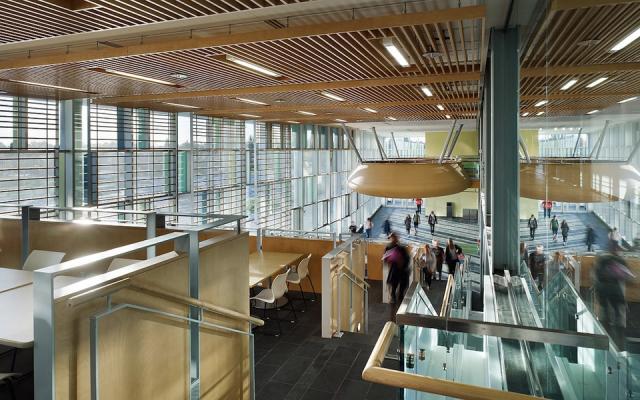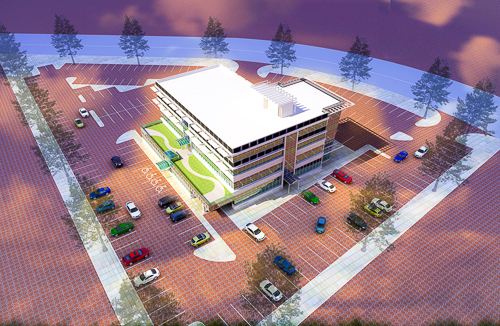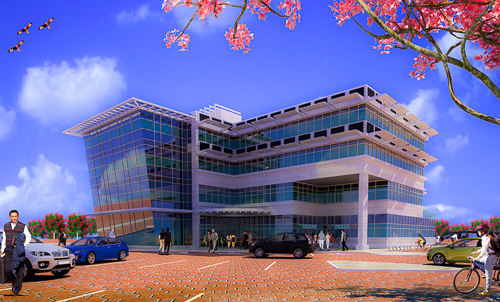(this is an article I wrote for UrbanToronto) There are plenty of global initiatives in place to encourage the building industry to do its part in eliminating greenhouse gas (GHG) emissions through sustainable design. The most transformative one by far is the 2030 Challenge, a rigorous plan of action advocating for a carbon-neutral built environment by the year 2030. The Ontario Association of Architects (OAA) is bringing this ambitious initiative to Ontario with an educational program to assist the province’s architecture and construction community to achieve the Challenge’s goals in a way that creates environmental, economic and social value.
To do so, the OAA is partnering with AIA+2030 (American Institute of Architects) and offering its members 10 four-hour learning sessions, created to provide specific strategies to becoming 'carbon-neutral', which is defined as using no fossil fuel, GHG-emitting energy to operate.
The initiative, dubbed OAA+2030 Professional Series, is adopted and updated from the AIA+2030 Professional Series, a partnership between Architecture 2030 and AIA Seattle. Numerous professional organizations and governments have endorsed The Challenge as part of their commitment to promote sustainable design. The City of Seattle was one of the first cities to sign on, initiating the Seattle 2030 District, an interdisciplinary public-private collaborative working to create a groundbreaking high-performance central area where all buildings – new and existing – will be built and renovated to aim for carbon neutral status.
Sessions run from late January through to the end of October 2014, in both Toronto and Ottawa, and give architects and design professionals the knowledge and leverage to guide decisions that will create sustainable, next-generation buildings. The comprehensive program is the first of its kind in Canada and covers topics like climate-responsive design, lighting strategies and renewable energy opportunities.
In 2002, architect Edward Mazria founded Architecture 2030, a solutions-based non-profit non-partisan organization, in response to global climate change. According to its findings, buildings not only consume much more energy than any other sector but, as the party responsible for nearly half of U.S. annual CO2 emissions*, have been identified as the largest contributor to climate change. Its mission is to rapidly transform the built environment from the major contributor of GHGs to a central part of the solution to the climate and energy crises. At a fundamental level, it involves changing the way communities and infrastructure are planned and built. The foundation of its work lies in the widely adopted 2030 Challenge, which asks the global design community to implement the following targets:
- All new buildings, developments and major renovations shall be designed to meet a fossil fuel, energy consumption performance standard of 60% below the regional average for that building type.
- At a minimum, an equal amount of existing building area shall be renovated annually to meet a fossil fuel, energy consumption performance standard of 60% of the regional average for that building type.
- The fossil fuel reduction standard shall be increased to:
- 70% in 2015
- 80% in 2020
- 90% in 2025
- Carbon-neutral in 2030
These targets may be accomplished by implementing innovative sustainable design measures, generating on-site renewable power and/or purchasing (20% maximum) renewable energy.
“The 2030 Challenge is not meant to replace any current green building rating system but rather it challenges all systems to a higher level of sustainable achievement,” says Richard Williams, member of the OAA Sustainable Built Environment Committee and Toronto moderator of the OAA+2030 course. “It sets a progressively higher bar for the design and development community to rise toward.”
And the principles and practices for realizing low-carbon and resilient built environments are increasingly accessible. At Greenbuild last November, Mazria announced the official launch of 2030palette.org, the organization’s latest innovation to drive global implementation of the 2030 Challenge. The website, which provides a wealth of best practices and recommendations as well as links to outside sources, approaches green architecture at every scale, from single building elements to entire regions.
The Royal Architectural Institute of Canada (RAIC) offers building case studies to examine on its website. Amongst those are the Algonquin Centre for Construction Excellence, designed by Diamond Schmitt Architects and Edward J. Cuhaci and Associates Architects, pictured above.
For more information on the OAA+2030 Professional Education Series, visit: http://www.oaa.on.ca/.
*The Building Sector was responsible for nearly half (44.6%) of U.S. CO2 emissions in 2010. By comparison, transportation accounted for 34.3% of CO2 emissions and industry just 21.1%. According to the U.S. Energy Information Administration (EIA), the Building Sector consumes nearly half (47.6%) of all energy produced in the United States. Seventy-five percent (74.9%) of all the electricity produced in the U.S. is used just to operate buildings. Globally, these percentages are even greater.






